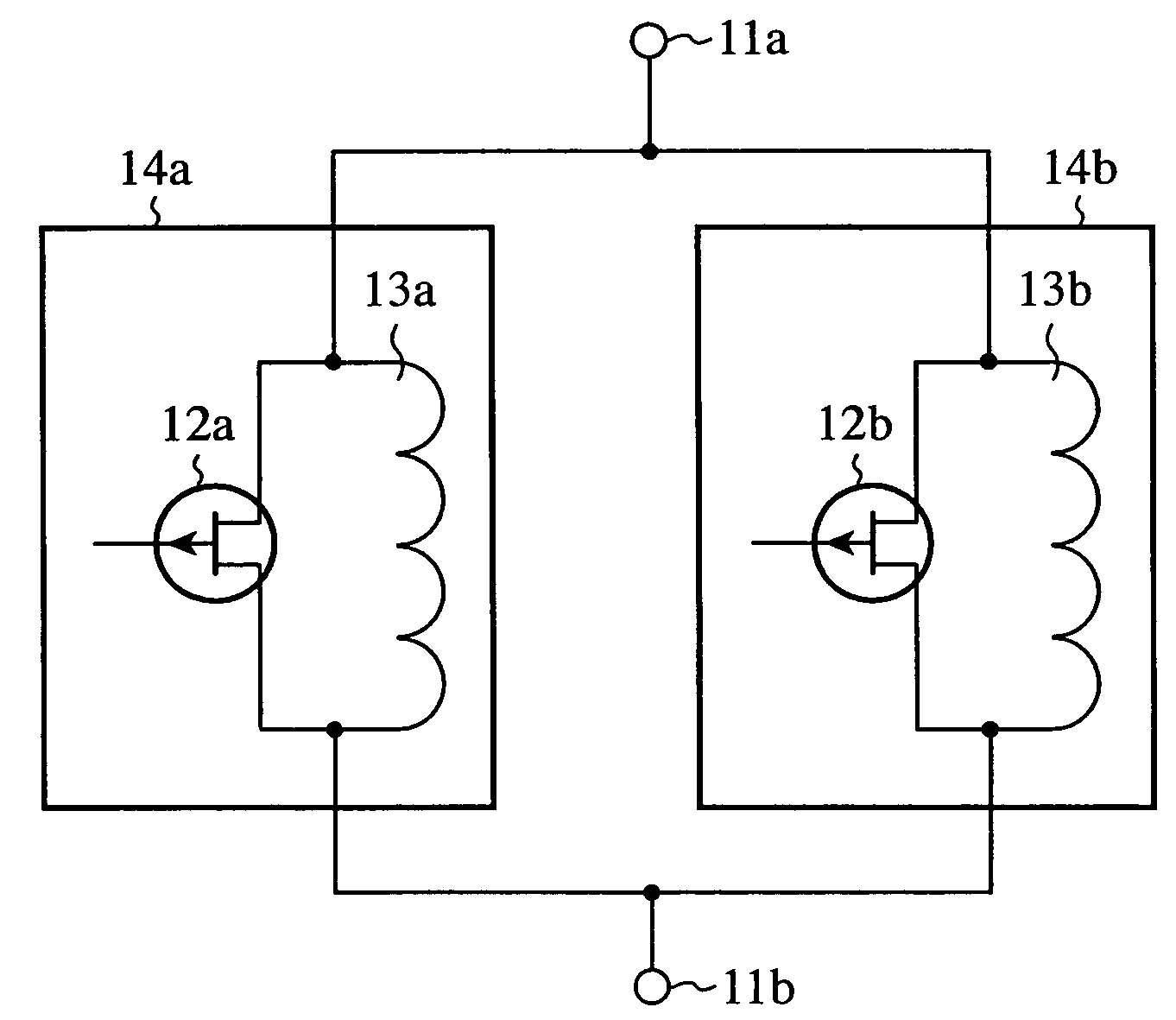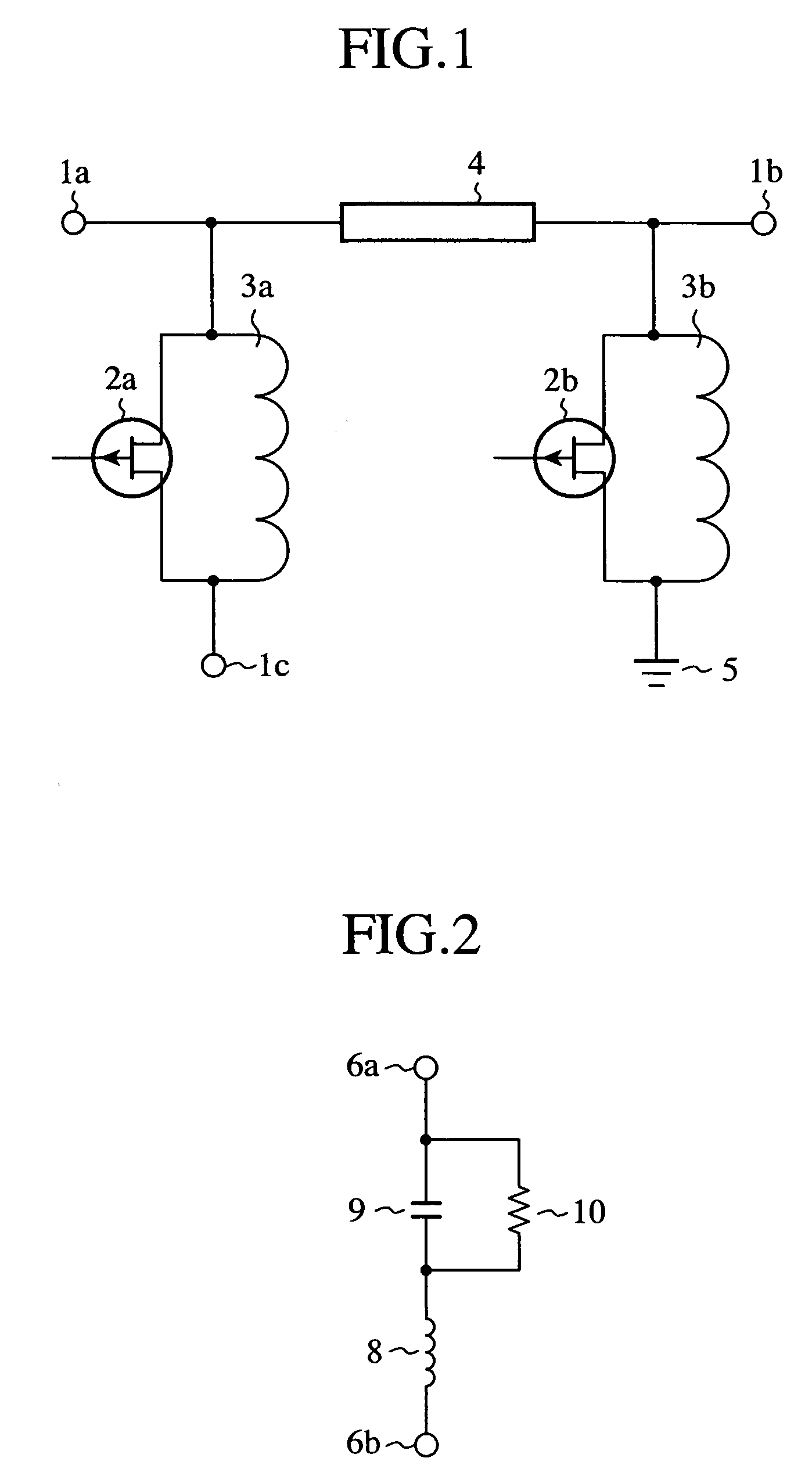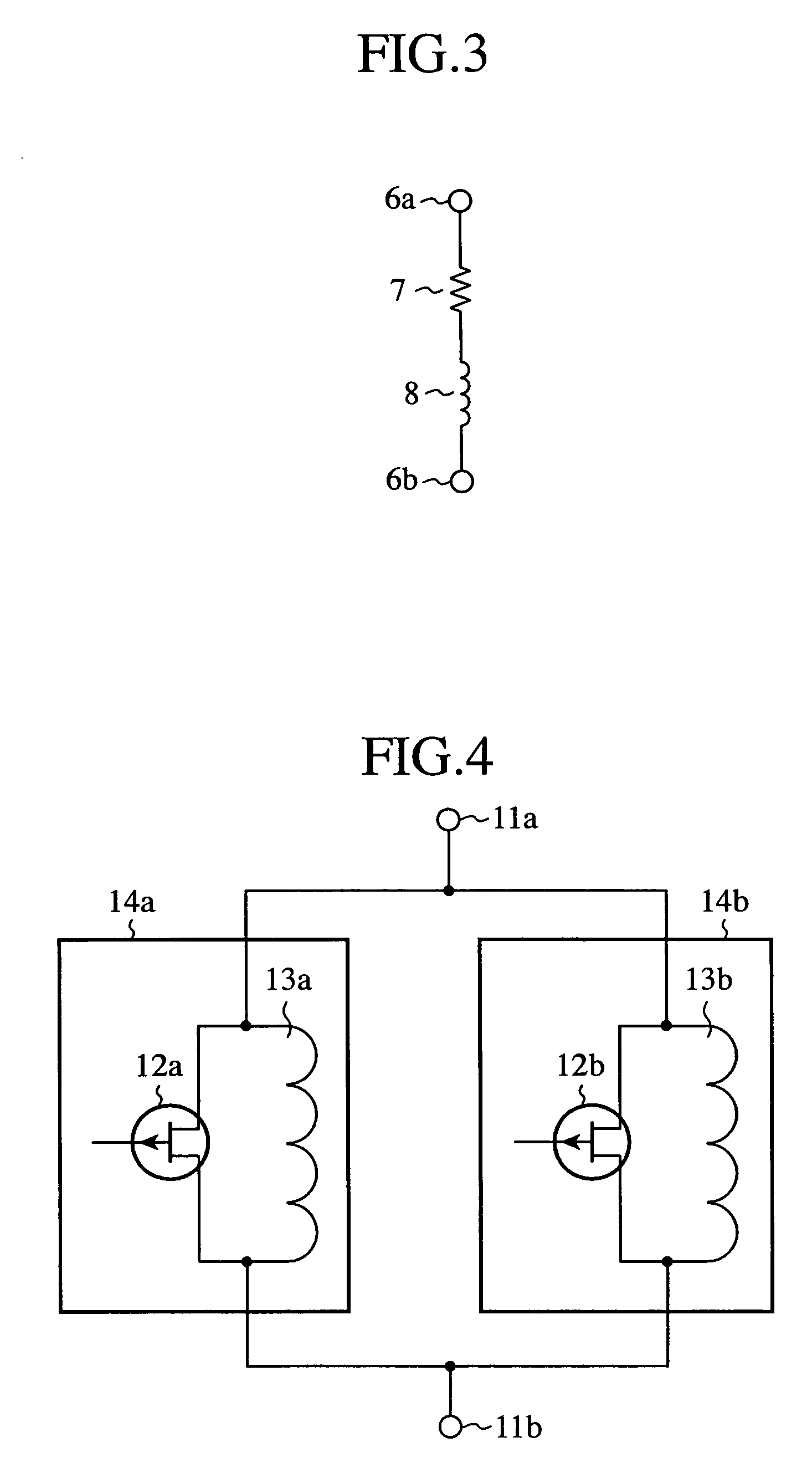Spst Switch, Spdt Switch and Mpmt Switch
a single-pole, multi-pole technology, applied in the direction of electronic switching, pulse technique, electrical equipment, etc., can solve the problems of reducing the isolation of the high-frequency signal from the input terminal, propagating etc., to prevent the reduction of the isolation reduce the propagation loss of the high-frequency signal, and the effect of high power
- Summary
- Abstract
- Description
- Claims
- Application Information
AI Technical Summary
Benefits of technology
Problems solved by technology
Method used
Image
Examples
embodiment 1
[0042]FIG. 4 is a circuit diagram showing a configuration of an SPST switch of an embodiment 1 in accordance with the present invention. The SPST switch shown in FIG. 4 has an input terminal 11a, output terminal 11b, FET (field-effect transistor) 12a, FET 12b, inductor 13a and inductor 13b. The parallel connection of the FET 12a and inductor 13a constitutes a first FET switch 14a, and the parallel connection of the FET 12b and inductor 13b constitutes a first FET switch 14b. The FET switches 14a and 14b have their first terminals connected to the input terminal 11a, and their second terminals connected to the output terminal 11b. Thus, the first FET switch 14a is connected in parallel with the first FET switch 14b in the present embodiment 1.
[0043]Connecting the two FETs 12a and 12b in parallel can halve their individual gate width to achieve the same withstanding power. Halving the individual gate width can make the reactance components of the parasitic inductors of the FETs 12a an...
embodiment 2
[0054]FIG. 7 is a circuit diagram showing a configuration of an SPST switch of an embodiment 2 in accordance with the present invention. As the SPST switch of the embodiment 1 shown in FIG. 4, the SPST switch shown in FIG. 7 has an input terminal 11a, output terminal 11b, FET 12a, FET 12b, inductor 13a and inductor 13b. The parallel connection of the FET 12a and inductor 13a constitutes a first FET switch 14a, and the parallel connection of the FET 12b and inductor 13b constitutes a first FET switch 14b. The embodiment 2, however, differs from the embodiment 1 in that the input terminal 11a and the output terminal 11b are connected directly, and in that the first FET switch 14a and first FET switch 14b have their first terminals connected to the input terminal 11a and output terminal 11b, and their second terminals connected to the ground 19. Thus, in the present embodiment 2, the first FET switch 14a is connected in parallel with the first FET switch 14b.
[0055]Connecting the two F...
embodiment 3
[0066]FIG. 10 is a circuit diagram showing a configuration of an SPST switch of an embodiment 3 in accordance with the present invention. The SPST switch shown in FIG. 10 has an input terminal 11a, output terminal 11b, FET 20, capacitor 21 and inductor 22. A second FET switch 14, which consists of a series connection of the FET 20 and capacitor 21, and the inductor 22 connected in parallel with the series connection, has its first terminal connected to the input terminal 11a, and has its second terminal connected to the output terminal 11b.
[0067]Here, the drain of the FET 20 can be connected to the input terminal 11a or capacitor 21, and the source of the FET 20 can be connected to the capacitor 21 or input terminal 11a.
[0068]Next the operation will be described.
[0069]In FIG. 10, the FET 20 operates as a switch for switching between the ON state and OFF state by the voltage applied to the gate.
[0070]FIG. 11 is an equivalent circuit diagram when the FET 20 in FIG. 10 is brought int...
PUM
 Login to View More
Login to View More Abstract
Description
Claims
Application Information
 Login to View More
Login to View More - R&D
- Intellectual Property
- Life Sciences
- Materials
- Tech Scout
- Unparalleled Data Quality
- Higher Quality Content
- 60% Fewer Hallucinations
Browse by: Latest US Patents, China's latest patents, Technical Efficacy Thesaurus, Application Domain, Technology Topic, Popular Technical Reports.
© 2025 PatSnap. All rights reserved.Legal|Privacy policy|Modern Slavery Act Transparency Statement|Sitemap|About US| Contact US: help@patsnap.com



